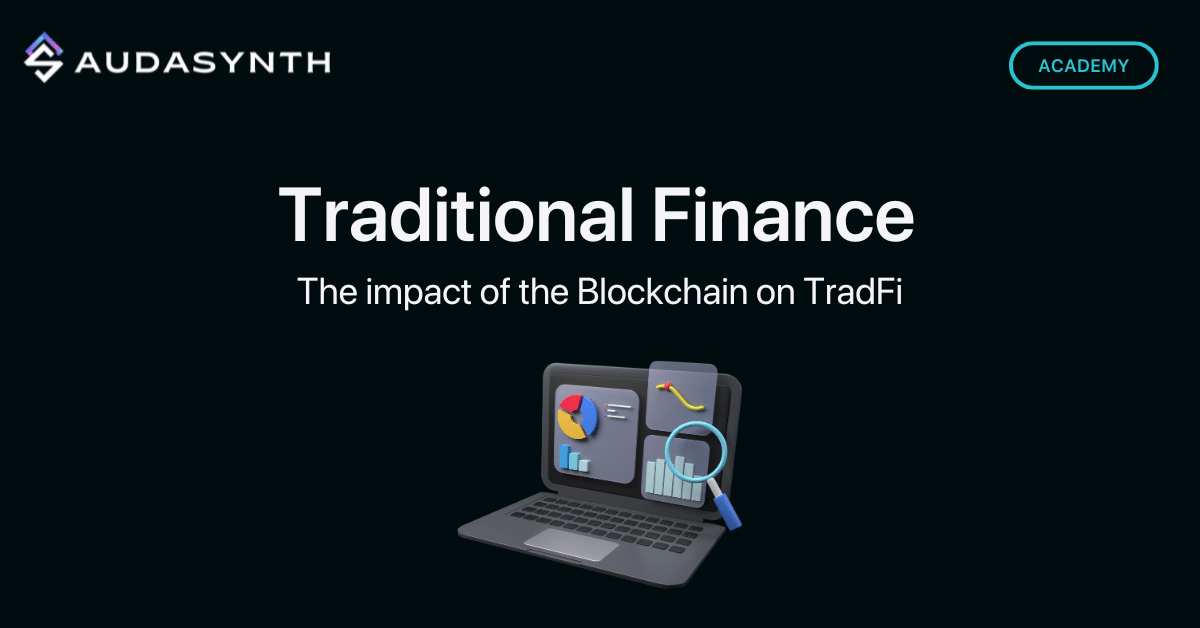TradFi
Content of this post:
Introduction and What is TradFi
“Traditional finance,” or TradFi, refers to the established financial system that most people use daily. A wide range of goods and services are offered by retail banks, investment banks, and commercial financial institutions. Savings accounts, mortgages, bank loans, and currency exchange services are all types of TradFi products.
Financial transactions and operations in the TradFi sector are managed by centralized intermediaries such as banks and other highly regulated institutions. This system of strict rules and laws ensures the safety and reliability of financial operations.
However, over the past few years, the cryptocurrency and blockchain ecosystem has introduced new terms and solutions like DeFi (decentralized finance) and CeFi (centralized finance). These new methods have changed how people think about and interact with financial services, leading to a direct comparison with traditional finance.
TradFi vs CeFi
CeFi, or “Centralized Finance,” offers most of the services that TradFi does, and to access them, users need to register and use centralized exchanges (e.g., Binance, Crypto.com, Kucoin, etc.), which are very similar to the platforms users already utilize in TradFi. These exchanges require creating an account with personal data, and just like in a bank or institution, custody of one’s assets is entrusted to the platform.
However, to date, many advances have been made, and traditional finance is also embracing DLT technology to allow for greater transparency and efficiency.
TradFi vs DeFi
The term TradFi was coined by the crypto community to differentiate it from the emerging decentralized finance (DeFi). DeFi includes all financial applications that use blockchain and smart contracts, designed to operate without intermediaries. These are platforms without central control but with intelligent algorithms that regulate cryptocurrency exchanges and transactions.
Impact of Blockchain on TradFi
Blockchain technology is revolutionizing the traditional financial sector, offering new opportunities to improve efficiency, transparency, and security in financial operations.
Key Benefits of Blockchain in TradFi
- Transparency: Every transaction recorded on a blockchain is visible to all network participants. This level of transparency reduces the risk of fraud and increases trust among involved parties.
- Security: The decentralized nature of blockchain makes it extremely difficult for hackers to compromise the system. Each block of data is encrypted and linked to the previous block, creating a secure and immutable chain.
- Efficiency: Smart contract automation enables fast and error-free transactions. Smart contracts are self-executing protocols that automatically enforce the terms of an agreement when predefined conditions are met.
- Cost Reduction: By eliminating the need for intermediaries, blockchain can significantly reduce transaction and management costs, making financial services more accessible to a larger number of people.
Tokenized Assets in TradFi
Tokenized assets represent another innovation introduced by blockchain. Tokenization allows traditional assets like stocks, bonds, or real estate to be digitally represented on the blockchain.
This process offers numerous advantages:
- Accessibility: Investors can purchase fractions of assets, making investments more accessible even to those with limited capital.
- Liquidity: Tokenization can increase the liquidity of assets, especially those of high value, by making them fractional and free from typical bureaucracy. This allows investors to trade tokens in real-time on trading platforms.
- Flexibility: Investors can diversify their portfolios more efficiently, accessing a wider range of assets with ease.
The Future of TradFi with Blockchain
The integration of blockchain into TradFi is creating a new financial paradigm where services are more secure, transparent, and efficient. Our investment platform in synthetic assets leverages these technologies to democratize access to traditional financial markets, enabling users to diversify their portfolios with greater freedom and control.
Follow AudaSynth on Twitter and Telegram to stay updated!
Twitter/X: https://twitter.com/AudaSynth
Telegram Channel: https://t.me/audasynth_ann

